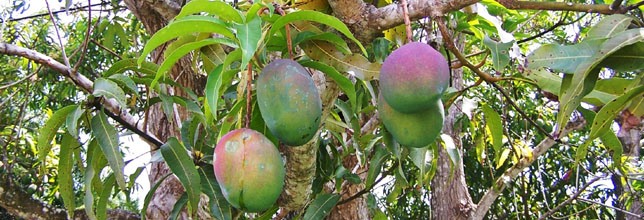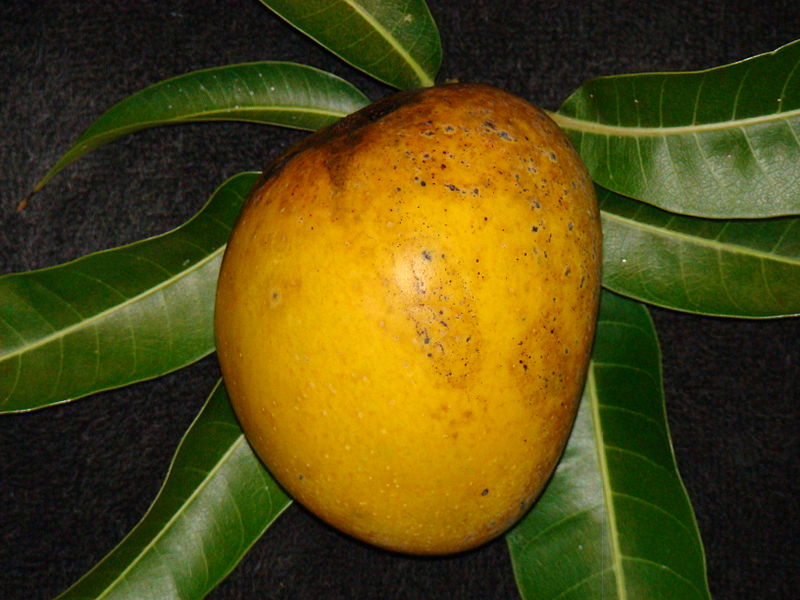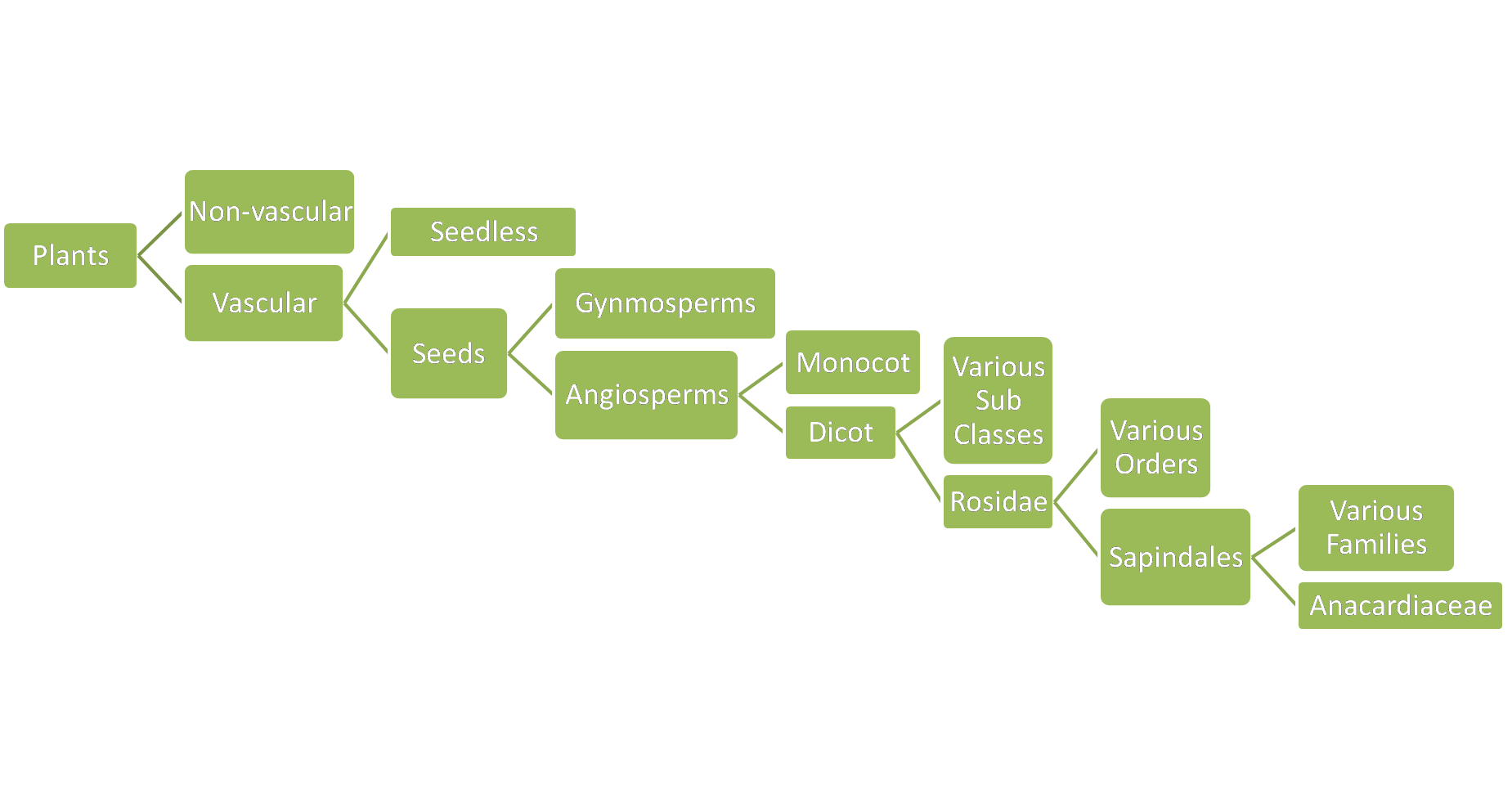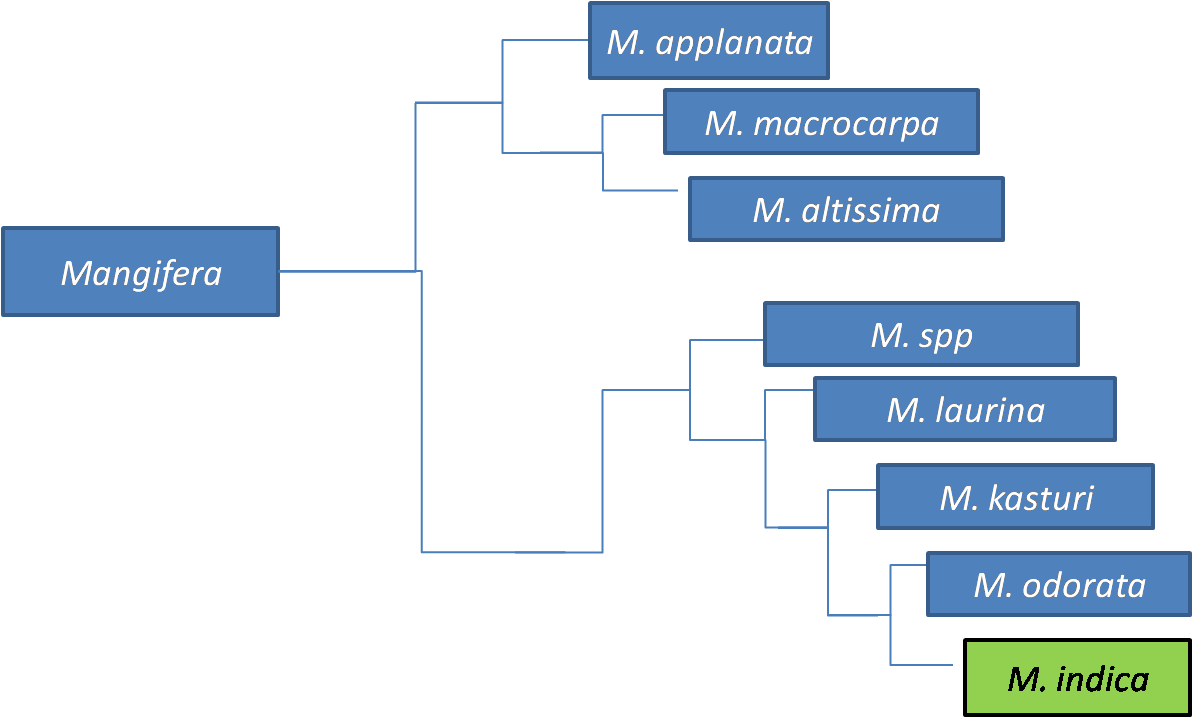
The Mango's Closest Relatives
Domain: EukaryotaMangifera indica is eukaryotic and therefore has a true nucleus with membrane-bound organelles.
Kingdom: Plantae

This organism has cell walls composed of cellulose, is multicellular, and is autotrophic.
Subkingdom: Tracheobionta
This plant possesses vascular tissue used to transport water and minerals.
Phylum: Magnoliophyta/Anthophyta
The mango is an angiosperm, meaning it produces flowers and fruits.
Class: Mangoliopsida
The mango tree is a eudicot due to the presence of two cotyledons in the embryo and flowers with 4 or 5 petals. Other organisms in this class include Mentha piperita (peppermint) Urtica dioica (stinging nettles), and Persea americana (avocados).
Subclass: Rosidae
This organism has elaborate flowers with as many stamens as petals.
Order: Sapindales
The mango tree has compound leaves that alternate growth along the stem. Another member of this order is Citrus sinensis (sweet orange).
Family: Anacardiaceae
Mangifera indica belongs to this family, also home to the cashew and pistachio, because it is found primarily in tropical regions.
Genus: Mangifera
This organism is an evergreen tree with drupe-like fruit. Like most other organisms in this genus, mangos typically grow in tropical locations.
Species: indica
Mangifera indica is native of India, and produces greenish to red drupes. The mango received the name "indica" as it is believed to originated in India. The common name, mango, is derived from the genus name. The name "mango" or a close derivative transcends many languages. For example, the term "mango" is used in English and Spanish, French recognizes "mangot," "mangue," or "manguier," and the Thai common name is "mamuang."
The "Mango" Tree of Life
Below is a phylogenetic tree of the mango. This tree demonstrates the relationship of the mango family, Anacardiaceae, to the rest of the land plants. The cashew and pistachio also call this family home. This tree is based on morphological data and is widely accepted.

A second phylogenetic tree is pictured below. This tree is a phylogenetic tree for the genus Mangifera created using molecular data. Specifically, this tree was constructed by analyzing the maturase-K gene found in the chloroplast.

Next, let's find out where you can find these wonderful fruits in their native habitat or go back to visit my home page!